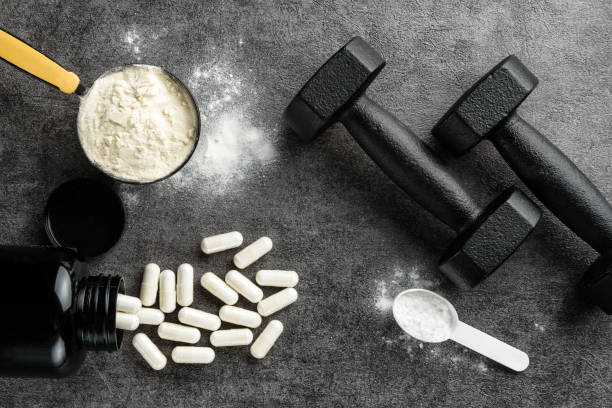Introduction
Defining Muscle Growth
Muscle growth, scientifically known as hypertrophy, refers to the increase in muscle mass and cross-sectional area. This process involves the enlargement of muscle fibers and is a result of a combination of mechanical tension, muscle damage, and metabolic stress. Understanding the intricate science behind muscle growth can help individuals optimize their fitness routines and achieve their physical goals more effectively.

Historical Background
The pursuit of muscle growth dates back to ancient civilizations, where strength and muscular prowess were highly valued. Early Greek and Roman athletes engaged in weightlifting and resistance training to enhance their physical capabilities. However, the scientific understanding of muscle hypertrophy significantly advanced in the 20th century with the development of modern exercise physiology.
Importance and Relevance Today
In today’s health-conscious society, muscle growth is a key focus for many individuals. Whether for aesthetic reasons, athletic performance, or overall health, building muscle mass is a common goal. Knowledge of the science behind muscle growth empowers individuals to train smarter, prevent injuries, and maximize their results.
The Physiology of Muscle Growth
Muscle Fiber Types
Human muscles are composed of different types of fibers, each with unique characteristics:
- Type I (Slow-Twitch): These fibers are endurance-oriented, fatigue-resistant, and rely on aerobic metabolism. They are smaller in size and are activated during low-intensity, long-duration activities.
- Type II (Fast-Twitch): These fibers are geared towards strength and power, capable of generating more force but fatigued more quickly. They rely on anaerobic metabolism and are larger in size. Type II fibers are further divided into Type IIa (fast oxidative) and Type IIb (fast glycolytic).
Muscle Anatomy
Muscles are made up of bundles of fibers called fascicles, which in turn are composed of individual muscle fibers (myocytes). Each muscle fiber contains myofibrils, which are the contractile elements of the muscle. Myofibrils are composed of repeating units called sarcomeres, which contain the proteins actin and myosin responsible for muscle contraction.
How Muscles Grow
Muscle growth occurs primarily through the enlargement of existing muscle fibers, a process called hypertrophy. There are two main types of hypertrophy:
- Myofibrillar Hypertrophy: Increases the size and number of myofibrils, leading to greater strength and density.
- Sarcoplasmic Hypertrophy: Increases the volume of sarcoplasmic fluid in the muscle cell, leading to increased muscle size and endurance.
Mechanisms of Muscle Growth
Mechanical Tension
Mechanical tension is created when muscles generate force against resistance. This tension is a primary driver of muscle growth. During resistance training, the mechanical load placed on the muscles stimulates mechanoreceptors, triggering cellular processes that promote hypertrophy.
Muscle Damage
Intense exercise can cause micro-tears in muscle fibers, leading to muscle damage. This damage is a crucial part of the muscle growth process, as the body repairs and rebuilds the damaged fibers, making them stronger and larger. This repair process involves the activation of satellite cells, which fuse with existing muscle fibers to promote growth.
Metabolic Stress
Metabolic stress occurs when muscles are subjected to prolonged periods of exercise, leading to the accumulation of metabolic byproducts such as lactate. This stress triggers a cascade of anabolic signaling pathways, promoting muscle growth. Techniques such as high-repetition sets, drop sets, and occlusion training enhance metabolic stress.

Hormonal Influences on Muscle Growth
Testosterone
Testosterone is a key anabolic hormone that significantly influences muscle growth. It promotes protein synthesis, increases muscle mass, and enhances strength. Resistance training naturally boosts testosterone levels, which contributes to hypertrophy.
Growth Hormone (GH)
Growth hormone stimulates muscle growth by promoting protein synthesis and increasing the uptake of amino acids into muscle cells. It also enhances fat metabolism, providing energy for muscle-building processes.
Insulin-Like Growth Factor-1 (IGF-1)
IGF-1 is another anabolic hormone that plays a critical role in muscle growth. It works in conjunction with GH to promote muscle cell proliferation and differentiation. IGF-1 levels increase in response to resistance training and nutrient intake.
Cortisol
Cortisol is a catabolic hormone that can have a negative impact on muscle growth if levels remain elevated for prolonged periods. It breaks down muscle proteins and inhibits protein synthesis. Managing stress and ensuring adequate recovery can help mitigate the effects of cortisol.
Nutritional Requirements for Muscle Growth
Protein Intake
Protein is essential for muscle repair and growth. Consuming adequate protein provides the necessary building blocks (amino acids) for protein synthesis. The recommended protein intake for muscle growth varies but generally ranges from 1.6 to 2.2 grams per kilogram of body weight per day.
Carbohydrates
Carbohydrates provide the energy needed for intense workouts and recovery. They replenish glycogen stores in muscles, supporting sustained performance and reducing muscle breakdown. Complex carbohydrates such as whole grains, fruits, and vegetables are ideal sources.
Fats
Healthy fats are crucial for hormone production and overall health. They support the absorption of fat-soluble vitamins and provide a dense source of energy. Including sources of unsaturated fats, such as avocados, nuts, and olive oil, can support muscle growth.
Hydration
Proper hydration is essential for muscle function and recovery. Water helps transport nutrients to muscle cells, remove metabolic waste products, and maintain electrolyte balance. Adequate hydration ensures optimal performance and reduces the risk of muscle cramps and fatigue.
Training Principles for Muscle Growth
Progressive Overload
Progressive overload involves gradually increasing the resistance or intensity of workouts to continue challenging the muscles. This principle is fundamental for promoting ongoing muscle growth. Methods include increasing weight, volume, frequency, or intensity of exercises.
Volume and Intensity
The volume (total amount of work done) and intensity (degree of effort) of training significantly impact muscle growth. High-volume training with moderate to high intensity is effective for hypertrophy. This can include multiple sets and repetitions per exercise.
Rest and Recovery
Rest and recovery are crucial components of muscle growth. Muscles need time to repair and rebuild after intense workouts. Adequate sleep, active recovery days, and proper nutrition support the recovery process and prevent overtraining.
Exercise Selection
Selecting the right exercises is vital for balanced muscle development. Compound exercises, such as squats, deadlifts, and bench presses, engage multiple muscle groups and are highly effective for promoting growth. Isolation exercises can target specific muscles for balanced development.
Personal Stories or Case Studies
Transformative Journeys
Consider the story of Sarah, a fitness enthusiast who transformed her physique through a well-structured resistance training program. By understanding and applying the principles of muscle growth, she gained lean muscle mass, improved her strength, and boosted her confidence. Her journey highlights the importance of consistency, proper nutrition, and progressive overload.
Expert Insights
Dr. Michael Roberts, a leading exercise physiologist, emphasizes the science behind muscle growth: “Understanding the mechanisms of hypertrophy can help individuals tailor their training and nutrition strategies to maximize muscle development. Consistency, proper technique, and adequate recovery are key components of effective muscle growth.”

Conclusion
Summary of Key Points
Muscle growth, or hypertrophy, is a complex process influenced by mechanical tension, muscle damage, and metabolic stress. Hormonal factors, proper nutrition, and effective training principles play crucial roles in promoting muscle growth. Understanding the science behind hypertrophy can empower individuals to achieve their fitness goals more efficiently and sustainably.



